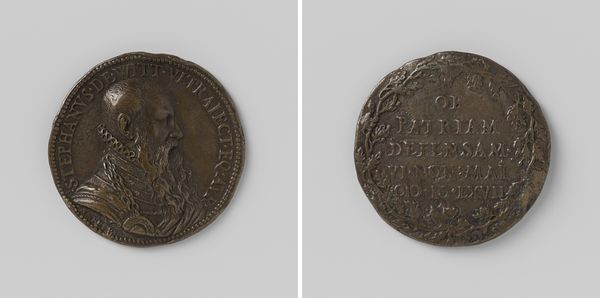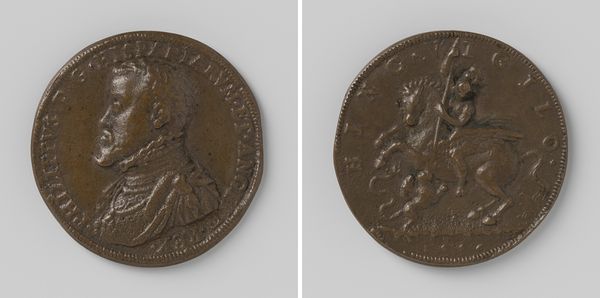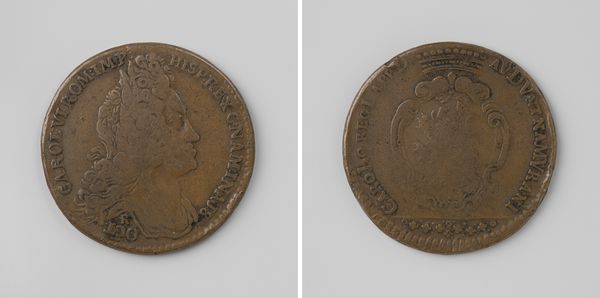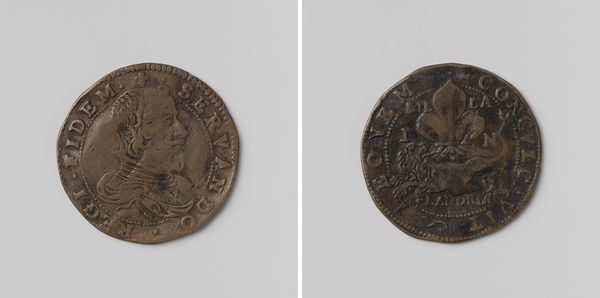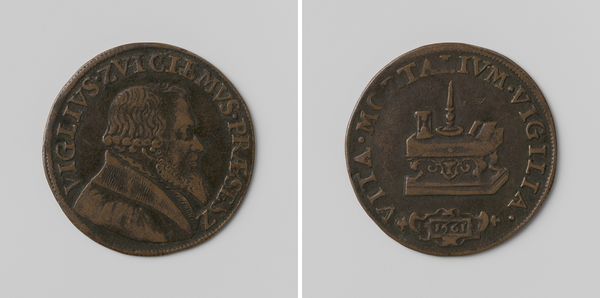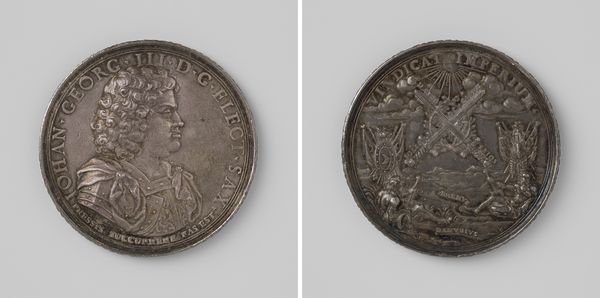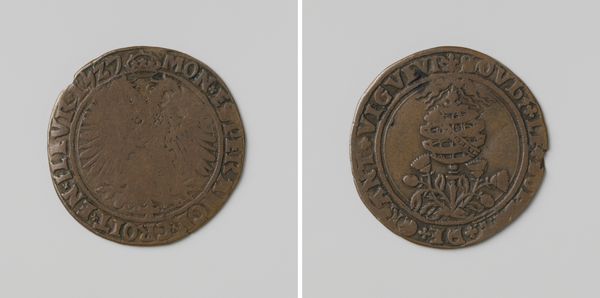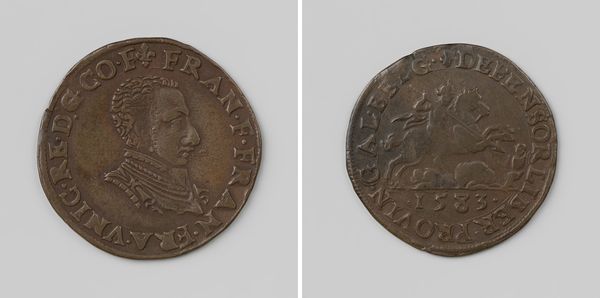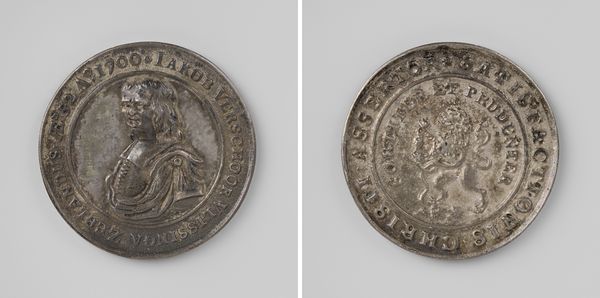
metal, relief, bronze
#
portrait
#
medal
#
metal
#
relief
#
bronze
#
history-painting
#
italian-renaissance
Dimensions: diameter 2.9 cm, weight 4.46 gr
Copyright: Rijks Museum: Open Domain
Curator: This striking bronze relief, made around 1552, immortalizes Charles V, the Holy Roman Emperor, and his son, Philip, heir to the Spanish throne. It is held here at the Rijksmuseum. Editor: There’s something deeply grave about the profiles chosen, especially in the limited space afforded by this circular medal. The patina and slight damage to the material actually enhance the gravitas, in my view. Curator: Indeed. The materiality speaks volumes. Bronze, a relatively humble material compared to gold or silver, suggests a dissemination strategy aimed at a wider audience. Medals like these were instruments of power. They circulated images, asserted dynastic continuity, and reminded people of imperial authority, even without immense wealth being displayed in its making. Editor: Looking closely at the forms themselves, the engraver demonstrated significant skill. Observe how light plays on the high relief of their faces and costumes. It subtly models their features, giving the portraits a life-like, three-dimensional quality, even on this miniature scale. Curator: And think about what is implied by depicting both father and son. We see an articulation of a carefully staged imperial narrative – ensuring a clear line of succession amidst religious and political upheaval. Consider the immense pressures of running such a large, fractured empire, and then think about the symbolic implications of being heir to this inheritance. The work certainly testifies to complex labor dynamics in Early Modern Europe Editor: Semiotically, Charles’ laurel wreath recalls the Caesars of antiquity, subtly associating him with the might of the Roman Empire, which held a powerful position during this part of history. Philip, although rendered with similar dignity, lacks that particular symbolic weight. Curator: The Italian Renaissance influences are also apparent in this object: the Classical revival, a growing awareness of human individuality, and an increasing use of representational portraiture as a tool for legitimizing and strengthening a patron's personal image. This work testifies not just to the importance of representing rulers but is more broadly illustrative of shifts in material production across European states during that moment. Editor: The artist managed to convey not only political power but also human complexity within a simple design. It’s an admirable encapsulation of the hopes and anxieties of a dynastic family in a moment of transition. Curator: A fascinating intersection of imperial image-making and artistic craft that tells many histories, right down to the touch and trade across Europe and artistic influences across that landscape.
Comments
No comments
Be the first to comment and join the conversation on the ultimate creative platform.

